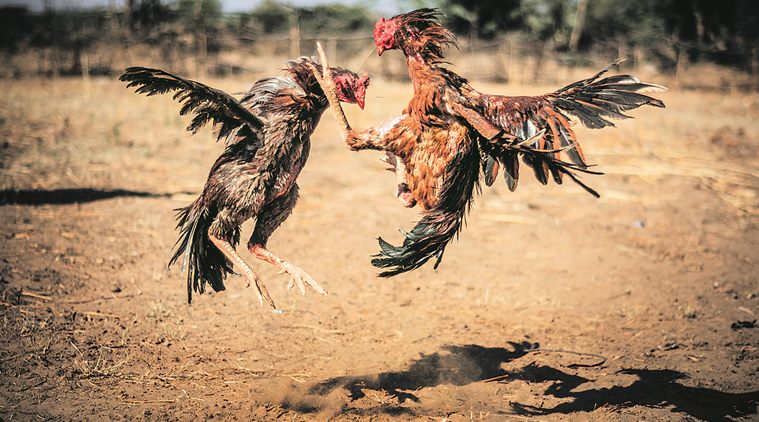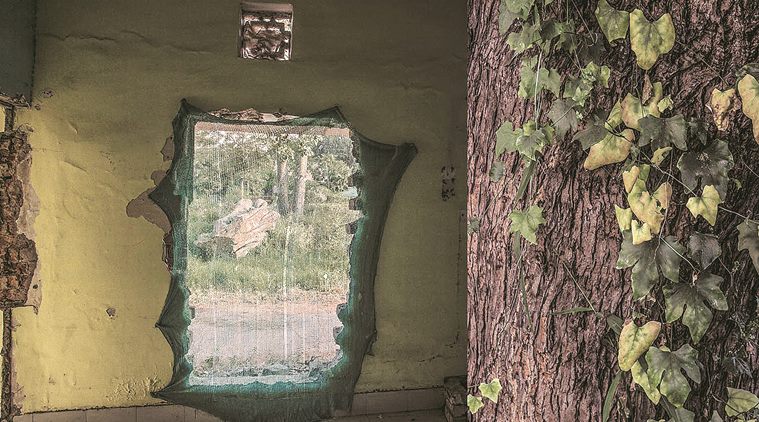Written by Pallavi Chattopadhyay |Published: January 18, 2019 12:14:35 am
Earthly Musings
This year’s edition of Habitat Photosphere fuses environmental sustainability with culture. Ahmed is one of the four awardees of the Photosphere Fellowship — who were selected through an open call from among hundreds of entries — along with Juhi Saklani from Delhi, Thulasi Kakkat from Kochi and Zishaan A Latif from Mumbai.

As a child, perched atop his terrace, Ajmer-based Syed Adnan Ahmed would be intrigued by the rooster fights taking place in his neighbourhood. He would see how they would be massaged and fed with pistachios, almonds and eggs for stamina, before they battled it out.
No wonder he has made illegal rooster fights and the relationship they share with their owners the subject of his exhibition at the second edition of Habitat Photosphere, which begins next month. His series of photographs titled “Murg Bazi”, showing roosters fighting in full swing, on display at the Jor Bagh Metro Station, offer an insight into what to expect at the upcoming festival.
Ahmed is one of the four awardees of the Photosphere Fellowship — who were selected through an open call from among hundreds of entries — along with Juhi Saklani from Delhi, Thulasi Kakkat from Kochi and Zishaan A Latif from Mumbai. Talking about the second innings of the festival, artistic director Alka Pande says, “While the first edition dealt with panchtattvas, the five elements, around the theme of sustainable development, this year’s edition is all about photography and sustainability and the theme is bhu, the earth. I have enlarged the web of sustainability by including not just environmental sustainability, but cultural sustainability as well.”

Twenty six-year-old Ahmed, a graphic designer by profession, says, “The fight is still practised in our country although it is banned by the government. Before the advent of mobile phones and television, cockfighting was often used as a form of entertainment, dating back to the Mughal times, with the Akbarnama also mentioning of its regular practice.”
On the other hand, Saklani’s photographs from her “A-dvaita/Not two” project looks at the roots, barks and branches of trees growing out of old walls and buildings. Having shot them in Delhi, Dehradun, Kolkata and Varanasi, Saklani and her relationship with trees have come a long way. “I would see people hugging trees and notice how many found solace in them. I find them healing,” she says. She went about searching for these “dramatic and beautiful” sculptures everywhere, capturing a tree growing out a shrine in Varanasi, ficus trees growing out of walls near Rohtak Road, and other variants sprouting out of old houses and havelis in Mehrauli, Chandni Chowk and near the railway station area in Old Delhi. She says, “I wish human beings didn’t see themselves as outside nature. These trees are making a point. They together make a whole and are not separate.”
“Majuli Eroding/Withering” by Latif looks at the eroding island of Majuli on the Brahmaputra, through the struggles of its people surviving on the fractured landmass. Kakkat, meanwhile, documents the ritualistic dance of Theyyam in its original form and its organic space before it perishes.






















No hay comentarios:
Publicar un comentario